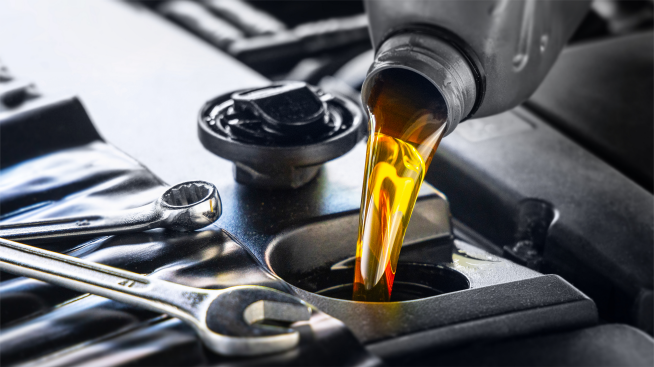Signs of a bad car battery vs. alternator

Have you ever accidentally left your car's cabin lights on overnight, only to find a drained battery in the morning? It happens to the best of us and, usually, all you need is a jump-start to get your car back on the road. If you’re still experiencing issues, however, it may be pointing to a problem with your alternator — a component that generates electricity to recharge your battery as you drive. Understanding and identifying the difference between the battery and the alternator may help save you some time (and maybe money) at the mechanic. Here’s how you can spot signs of a bad car battery vs. alternator.
The difference between a car battery and alternator
Your car's battery and alternator need to function in tandem to keep your car on the road. First, your car battery uses its stored energy to send the initial surge of power to start your engine. Then, your alternator kicks in to serve as a generator, sourcing mechanical energy from your car’s crankshaft to continuously charge your car battery and keep your vehicle’s electrical systems fully functioning.
How to tell if your battery or alternator is bad
Your car battery and alternator both help power your car’s electrical system and share some common symptoms of failure. This can make diagnosing the issue difficult, but not impossible — especially if you understand how each component works individually.
If your car is struggling to power on, it’s typically because your battery doesn’t have enough (or any) power to kickstart your engine. If you know how car batteries work, you might already know that they tend to deteriorate after a few years, and it may be the case that it's time for a replacement. However, if your car turns on just fine but then struggles to stay on, signs may be pointing to potential alternator malfunctions. Here are some other signs that may help you distinguish between a bad battery vs. bad alternator:
Signs of a bad car battery
Battery-related issues tend to show themselves suddenly, with common symptoms including:
- Inability to start your car, which may be accompanied by “clicking” sounds when you turn your key.
- Electrical accessory malfunctions, such as difficulty adjusting your power seating, which could come from an underperforming battery.
- Your “check engine” light is illuminated on your dashboard.
- A pungent smell of rotten eggs, which could signal battery corrosion.
Signs of a bad alternator
Failing alternators tend to show symptoms more slowly compared to a bad battery. Signs of a bad alternator could include:
- Dim lights that brighten when you accelerate, which may signal that your alternator isn’t functioning correctly without extra output from your engine.
- Grinding, whining or other loud noises coming from your engine.
- The smell of burning rubber, which may be from the result of a worn-out alternator belt.
Troubleshooting a bad battery vs. bad alternator
If you’re experiencing issues with your car (electrical or otherwise), it’s usually best to take it to a mechanic who can professionally diagnose and fix the problem. That being said, you may be able to do some basic troubleshooting of your car’s electrical issues at home by jump-starting the car and observing how it reacts.
Here’s how:
- First, it’s best to slip on a pair of insulated gloves which help minimize potential injuries from flying sparks. Next, you’ll want to carefully connect a set of jumper cables from your car battery to an external battery charger or to a healthy battery in another car. If you’re using another vehicle, it’s safer to leave it off while you connect the cables. The same applies for external chargers or batteries (if they have an on/off switch).
- Once the cables are safely and securely connected on both sides, it’s time to get the power running. If you’re using an external charger, make sure it’s turned on. If you’re using another car, start that vehicle. Wait a few moments for your car’s battery to charge, and then start your car.
- Lastly, turn off your charging source (whether it’s an external charger or another car) and remove the jumper cables from both ends while wearing your insulated gloves. Let your car run idle for thirty minutes to an hour.
- If your engine continues to run, it may be that your car battery was simply drained and needed some juice.
- If the engine starts and dies shortly after, your alternator may not be keeping your battery sufficiently charged and could be the culprit.
Can you drive with bad battery or alternator symptoms?
It’s typically not advisable to drive when you’re experiencing signs of a faulty electrical component, as you could be left in a vulnerable position if your car were to sputter out on the road.
That said, if your battery isn’t more than a couple of years old and was merely accidentally drained by something like the interior lights being left on overnight, it likely just needs a jump and recharge. If the issue lies with your alternator, however, it’s possible you may be able to drive a few miles before the battery is drained. In either case, it may be best to take your car to a trusted mechanic to get the issue professionally fixed as soon as you can.
How to fix a bad battery or alternator
If the issue is a bad battery, you may be able to purchase a new one from an auto parts store that may replace the battery for you as part of the purchase. If the issue is your alternator, or you’re unable to find an auto parts store to replace your battery for you, your best bet may be to take it in to your local mechanic for a replacement.
In summary
Diagnosing electrical issues with your car can be tricky, but once you know the signs of a bad battery vs. alternator, it could be a little easier to sniff out. If all you need is a battery replacement, you may be in line for a relatively straightforward fix. However, car trouble can throw a wrench in anyone’s schedule — to keep your car in reliable shape, it’s best to stay on top of your maintenance schedule and take your car to a professional when it’s time for repairs.



